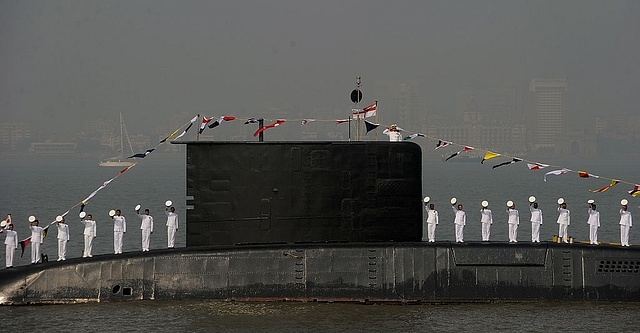
Indian Nuclear Submarine Project Is A Rs 25,000 Crore Success: Report
The indigenous submarine project would have tremendously increased the technical know-how and confidence of those involved.
The only way to avoid all the wrangling and mortgaging of national security to foreign powers is to invest heavily in local research and development.
If reports are to be believed, it may now cost less to build nuclear submarines in India than to import conventional ones from abroad.
When India last imported (or licence-produced) submarines it cost the exchequer upwards of Rs 3,000 crores per unit. This would only be the upfront cost of manufacturing the submarine, early stage maintenance and some weapon systems. As years roll by arms vendors were able to extract more than their pound of flesh in services and upgrades.
This was also observed in the case of Admiral Gorshkov (now INS Vikramaditya) where Russia sold the navy an old ship and then charged a bomb for its refit. The navy will pay a lot more money in the coming decades to keep INS Vikramaditya in service. The situation is the same in almost all major arms purchases.
The only way to avoid all the wrangling and mortgaging of national security to foreign powers is to invest heavily in local research and development. But this is easier said than done. Complex weapon systems require cutting-edge industrial know-how and top-notch human talent – two things India badly lacks and has been struggling to cultivate. Even if local development efforts do bear fruit armed forces sometimes reject such products because of the availability of a superior product. Vendors are always eager to kill competition before it even takes off.
The Arjun tank project is one such example where the army refused to see merit in buying and continuously improving a locally-built tank and has opted for Russian tanks instead. The Indian Air Force (IAF) can also be accused of not recognising the potential and importance of nurturing a military-industrial complex. The Tejas aircraft project, for example, could have progressed much more had the IAF been actively involved from the beginning.
Thankfully, there is a success story the armed forces can learn from. An internal assessment by Defence Ministry has shown that it would cost less than Rs 35,000 crore to build six nuclear submarines for the navy. These submarines would be based on the design of INS Arihant, India’s first nuclear submarine. They would have much higher endurance and range than conventional submarines that the navy is looking to license-produce from foreign vendors.
This ET report contrasts the cost of six nuclear submarines (Rs 35,000 crores) to the hefty bill of Rs 60,000 crores for Project 75I, code-name for the navy project to import/license-produce six conventional submarines.
That is a saving of Rs 25,000 crores – a neat payback for the investment that must have gone into building INS Arihant. Besides, India won’t be held hostage to the whims of foreign vendors. Neither would there be threats of future spares supply or sanctions. Seems like the INS Arihant is already a winner.
Even if there were to be a degree of exaggeration in the internal assessment that has come up with these astonishing numbers, what is undeniable is that the indigenous submarine project would have tremendously increased the technical know-how and confidence of those involved. The spin-offs and security benefits would definitely be worth more than a measly Rs 25,000 crores. And that is reason enough to celebrate.